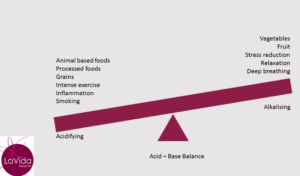Dairy can be a confusing food group as there are many different types of dairy available. Dairy products may be derived from cow, sheep and goat milk. Dairy includes; milk, cheese, cream, icecream, butter, and fermented products like yoghurt and kefir. Then we have A1 and A2 milk, lactose free milk and cheese, as well as the usual full fat and reduced fat options.
Dairy in all its forms has become a staple in our western diet, but do we actually need dairy, (with the exception of breastmilk or equivalent during infancy and early childhood)?
The answer is no.
We are able to obtain all the nutrients that dairy provides from other foods. However; dairy is a great source of bioavailable calcium, phosphorous, vitamins and protein, and certainly in young children it’s much easier to get them to eat some dairy than a cup of silverbeet!
In this blog, I’ll discuss the difference between a dairy allergy and intolerance, the difference between protein and lactose in dairy products, conditions that often respond well to avoiding dairy, and outline some other calcium rich food sources. As a result you will be able to navigate the dairy aisle of your supermarket with more confidence and identify whether you need to consider avoiding or switching your dairy products.
Do you have a dairy allergy or intolerance?
A dairy allergy causes an immune reaction which often involves multiple organs and can produce a variety of symptoms (including digestive symptoms). An allergy can be serious and potentially life threatening if it involves the respiratory or cardiovascular system, however; most often, dairy reactions are not that severe. Cow’s milk allergy is more common in children and many children will outgrow their allergy as they mature. An allergy is usually to casein (the proteins) in dairy.
The types of casein in dairy:
Casein is the largest protein found in dairy and A1 and A2 proteins (from the casein family) are the most common of these.
A1 and A2 proteins are found in dairy products from most cows, whereas goat and sheep dairy has only A2 protein. Depending on the breed of cow, you will get differences in the amount of A1 and A2 proteins in your dairy products, with certain breeds of cow producing primarily the A2 protein (this is where A2 milk comes from).
Some argue that A2 is better for you than A1. There has been some research into the inflammatory effects of the A1 protein and its potential for negative health consequences such as diabetes and heart disease. However; the studies have not been conclusive and others will argue that there’s not enough evidence to support the claims that A1 dairy is an issue. Personally, I see the positive changes in my clients’ health after swapping from A1 to A2 dairy sources (when they have difficulty digesting dairy or have other symptoms which I will discuss later).
A dairy intolerance is more common than an allergy and often manifests as digestive complaints (especially diarrhoea or bloating). However; dairy intolerance can also contribute to other complaints such as headaches, acne and recurrent illnesses such as respiratory and/or ear infections. A dairy intolerance is often caused by lactose, the sugar found naturally in all milk. It is produced by all mammals, even us. To break down lactose your body has an enzyme called lactase. In some people, this enzyme may be deficient causing a lactose intolerance and therefore digestive discomfort.
Lactose intolerance is estimated to affect 75% of the population (after infancy). If you have a lactose intolerance you can usually consume a small amount of dairy (a cup of milk for example) before experiencing digestive symptoms.
Low lactose or no lactose dairy products:
Dairy products that have lower levels of lactose include: hard cheeses, butter and cream. Whilst yoghurt and kefir contain lactose, the live bacteria in these products help to breakdown the lactose and therefore they are less likely to cause digestive upset.
Lactose free milk is made by adding the enzyme lactase to the milk and storing it for 24 hours. This neutralises the lactose and therefore makes it easier to digest (for those with a deficiency in the lactase enzyme). If you try this milk and still have issues with digestion, it may be that your are sensitive to the milk proteins instead.
What health conditions may benefit from a low or no dairy diet?
I often recommend my clients add good things to a diet rather than take food away. I do this because most of my clients are time poor and asking them to restrict their diet is often unrealistic. Adding in more healthy foods can often ‘crowd out’ the foods that don’t serve them and healthy habits then form over time.
Having said that however; there are some conditions that I find respond particularly well to avoiding dairy. These include; digestive complaints after eating dairy (of course), acne, heavy and painful periods, autoimmune conditions and chronic skin conditions such as eczema and psoriasis. Many of these conditions have inflammation as an underlying contributing factor and it may therefore be the inflammatory action of the milk proteins (more often A1) exacerbating their symptoms.
Clients who present with these conditions often report a history of digestive issues which have somewhat resolved to be replaced with menstrual problems or issues with their skin. When these clients switch to A2 dairy products or avoid all together, symptoms will often improve. It’s not always the answer of course as the ‘one size fits all approach’ rarely works.
Thinking of going dairy free?
The main concern for many people when they are planning to give up dairy is ensuring they get enough calcium. Adults are recommended to consume 1000mg of calcium per day and mother nature is looking after us with a number of calcium sources that are dairy free.
Below are some examples of non-dairy calcium sources:
- 1 cup of soy milk = 300mg of calcium
- 1 small can of sardines = 480mg of calcium (this is because of the calcium rich bones)
- 1 small can of salmon = 279mg of calcium (again because of the calcium rich bones)
- 1 tablespoon of tahini = 66mg of calcium
- 10 almonds = 30mg of calcium
- 10 brazil nuts = 53mg of calcium
- 1 cup of chickpeas = 90mg of calcium
- 1 cup of celery = 31mg of calcium
- 1 cup of bok choy = 65mg of calcium
- 1 cup of silverbeet = 170mg of calcium
This list is not exhaustive and essentially, if you are consuming a varied diet with vegetables (including green leafy vegetables), oily bony fish, nuts, seeds and legumes you are likely to reach your calcium intake. There are also foods fortified with calcium such as rice, oat and almond milks (check the labels).
If you are concerned you’re not getting enough calcium, you can take a supplement, however; where possible making changes to your diet to increase your calcium intake is preferred. I do not recommend taking a supplement unless you’ve consulted your naturopath or health care practitioner.
Think you have an issue with dairy or other foods?
A food intolerance can present in a variety of ways so occasionally it’s not clear what food (if any) is causing your symptoms. Sometimes completing a diet diary is enough for you to recognise and eliminate a food that is upsetting your digestion. In cases where your symptoms are many, and you can see no clear pattern with the food you are eating, a naturopath can help.
Your naturopath will want to obtain a full health history, likely have you complete a diet diary or food intolerance testing and then discuss a treatment plan that is specific to you.





